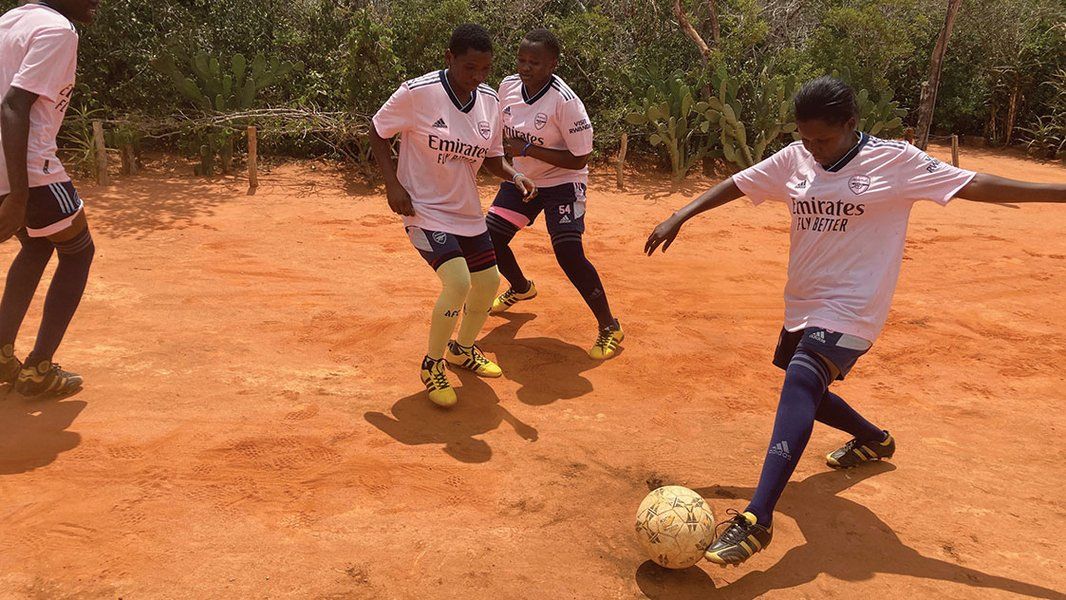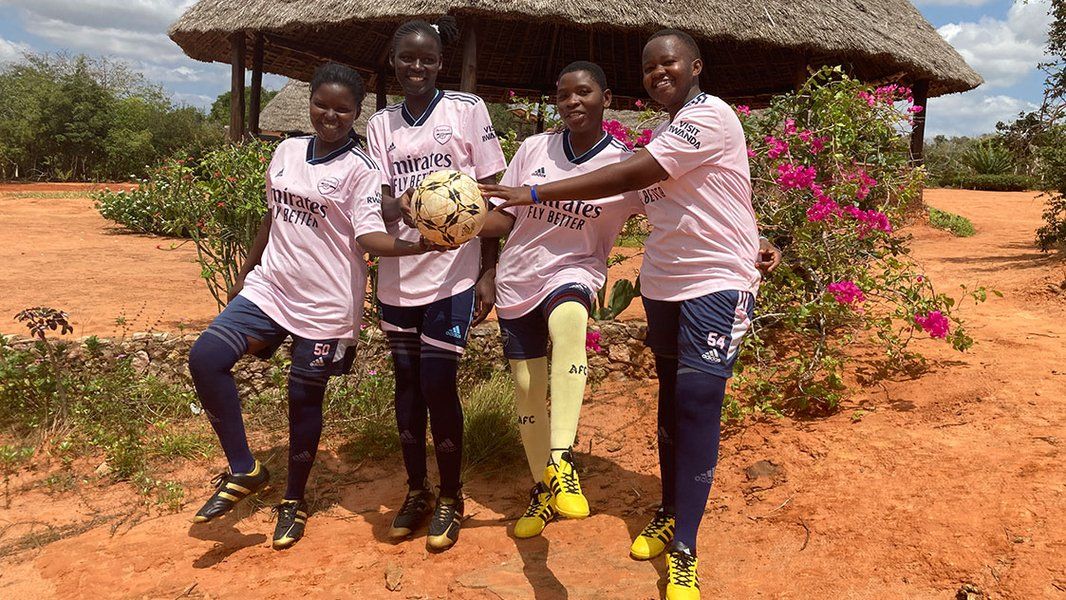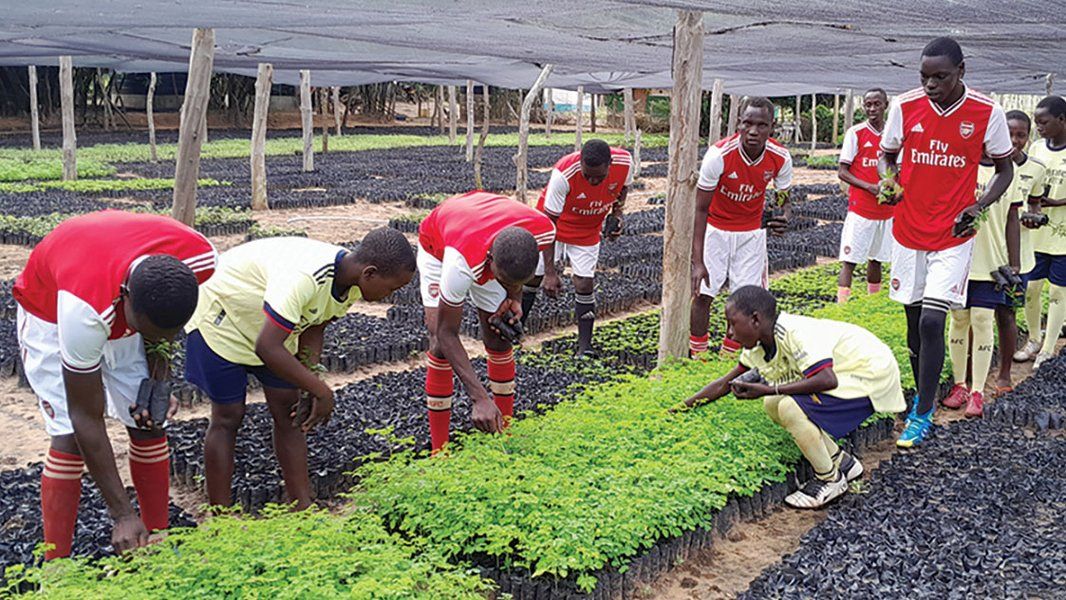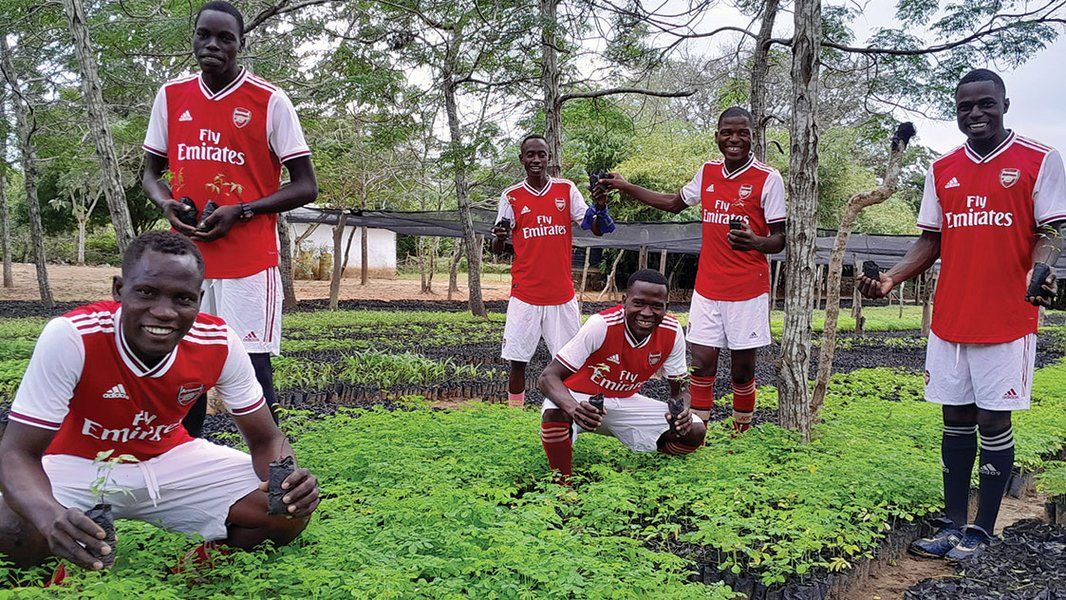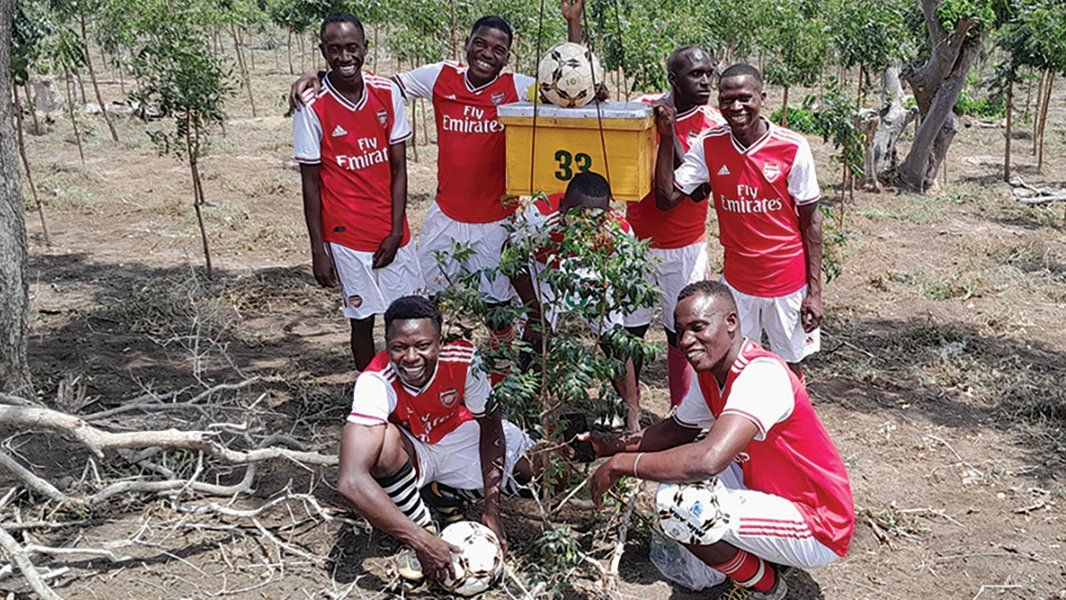As part of our support for Bore, home of the Arsenal Forest and all of the 28,425 trees we’ve now planted, every season we send a huge consignment of Gunners kit out to Kenya.
Match shirts, shorts, training tops, socks, waterproof jackets... it primarily comes down from our training centre, where it was the previous season’s first-team and Academy players’ training gear (hence the squad numbers if you look carefully) and is hugely appreciated by the workers at the Arsenal Forest site – and of course both of the football teams, the Bore Lions and Bore Lionesses, who are proud to represent Arsenal in the region.
CarbonLink – our partners in the Arsenal Forest project – also chip in with football boots, which they buy in Mombasa each year, and there is a grand unveiling of all of the new kit and boots at the Arsenal Forest Centre. It’s one of the most exciting days of the year down in Bore.
But it’s not all about football, of course, even for the players. Both our sponsored football teams in Bore – the Lions and the Lionesses – have been helping in the Arsenal Forest recently.
Firstly the teams chipped in at the nursery, which has been very busy recently as the funding from Arsenal and other projects – allied to perfect growing conditions – has seen the propagation capacity go up from one million seedlings to 1.25 million.
As is the case across the world, footballers in Bore are seen as role models within their community and it’s great that other youngsters and aspiring players can see them at the Arsenal Forest, taking part in propagation, planting and weeding.
The Bore Lions even took a break from their training schedules to get into the forest and check on some of our 20 beehives.
The group pictured below all play for the team and are thrilled to represent Arsenal in Kenya. At the back of the picture are (left to right) Baraka Kilumo, George Kithuku, Emmanuel Kalama and Baraka Karisa, with Swalleh Masha and Kazunga Kombe sitting at the front with Cosmus Kahindi hidden by one of our 28,000 neem trees.
All the hives are occupied and producing now, although it will still be some months before they yield any Arsenal Honey to treat our tastebuds. Good things come to those who wait…
Copyright 2025 The Arsenal Football Club Limited. Permission to use quotations from this article is granted subject to appropriate credit being given to www.arsenal.com as the source.





